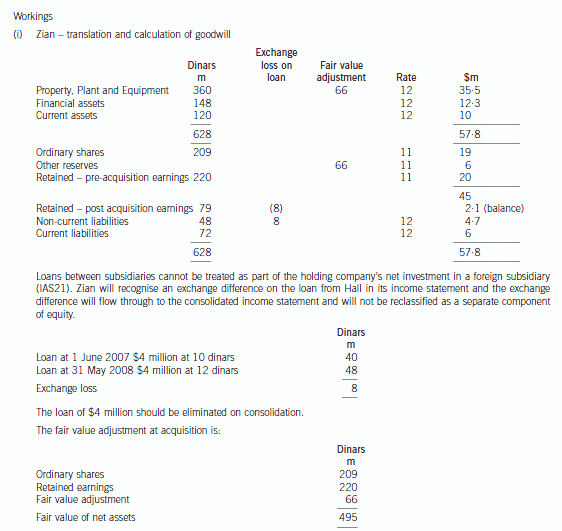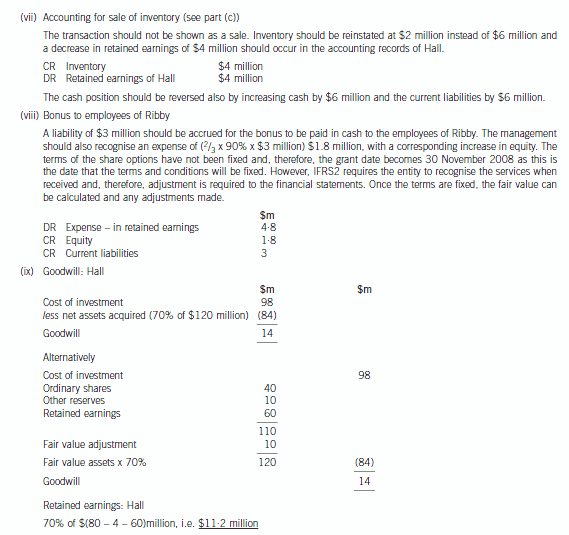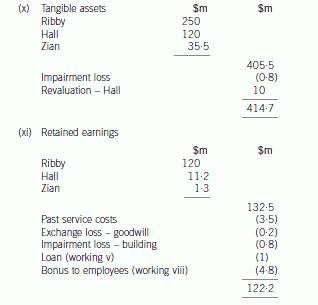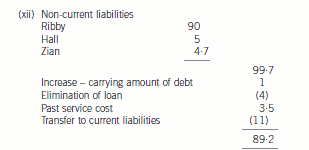ACCA考试常用公式汇总,值得全国考生收藏!
发布时间:2020-01-10
距离2020年3月份的ACCA考试还有两个多月左右的时间,想必备考ACCA的同学们正在如火如荼地进行着复习。那么,今天这条“公式宝典”你一定要收好,或许会帮助你成功通过ACCA考试哦!接下来,51题库考试学习网将这份“公式宝典”分享给大家:
因为ACCA考试毕竟是国际性质的考试,因此一些题的计算可能就存在不同的计算方式,计算方式的不同也会导致结果的不同。
一、境内
1、税额=销项税-进项税
2、销项税=销售额×税率
3、视销征税无销额(1)当月类平均;(2)近类货平均,(3)组税价=成本×(1+成利率)
4、征增税及消税:
组税价=成本×(1+成润率)+消税
组税价=成本×(1+成润率)/(1-消率)
5、含税额换
不含税销额=含税销额/1+率(一般)
不含税销额=含税销额/1+征率(小规模)
6、购农销农品,或向小纳人购农品:
准扣的进税=买价×扣率(13%)
7、一般纳人外购货物付的运费
准扣的进税=运费×扣除率
*随运付的装卸、保费不扣
8、小纳人纳额=销项额×征率(6%或4%)
*不扣进额
9、小纳人不含税销额=含额/(1+征率)
10、自来水公司销水(6%)
不含税销额=发票额×(1+征率)
以上是国内物品的计算方式,接下来是国外进口的相关公式
二、进口货
1、组税价=关税完价+关税+消税
2、纳额=组税价×税率
三、出口货物退(免)税
1、"免、抵、退"计算方法(指生产企自营委外贸代出口自产)
(1)纳额=内销销税-(进税-免抵退税不免、抵税)
(2)免抵退税=FOB×外汇RMB牌价×退率-免抵退税抵减额
*FOB:出口货物离岸价。
*免抵退税抵减额=免税购原料价×退税率
免税购原料=国内购免原料+进料加工免税进料
进料加工免税进口料件组税价=到岸价+关、消税
(3)应退税和免抵税
A、如期末留抵税≤免抵退税,则:
应退税=期末留抵税
免抵税=免抵退税-应退税
B、期末留抵税>免抵退税,则:
应退税=免抵退税
免抵税=0
*期末留抵税额据《增值税纳税申报表》中"期末留抵税额"定。
(4)免抵退税不得免和抵税
免抵退税不免和抵税=FOB×外汇RMB牌价×(出口征率-出口退率)-免抵退税不免抵税抵减额
免抵退税不免和抵扣税抵减额=免税进原料价×(出口征率-出口货物退率)
2、先征后退
(1)外贸及外贸制度工贸企购货出口,出口增税免;出口后按收购成本与退税率算退税还外贸,征、退税差计企业成本
应退税额=外贸购不含增税购进金额×退税率
(2)外贸企购小纳人出货口增税退税规定:
A、从小纳人购并持普通发票准退税的抽纱、工艺品等12类出口货物,销售出口货入免,退还出口货进税
退税=[发票列(含税)销额]/(1+征率)×6%或5%
B、从小纳人购代开的增税发票的出口货:
退税=增税发票金额×6%或5%
C、外企托生企加工出口货的退税规定:
原辅料退税=国内原辅料增税发票进项×原辅料退税率
以上这些就是全部ACCA考试常用公式,希望对大家有所帮助!最后51题库考试学习网想告诉大家:“放弃可以找到一万个理由,但坚持只需一个信念!致敬那些在ACCA备考路上永不放弃的人,好结果只留给有毅力的人。”
下面小编为大家准备了 ACCA考试 的相关考题,供大家学习参考。
3 (a) Financial statements often contain material balances recognised at fair value. For auditors, this leads to additional
audit risk.
Required:
Discuss this statement. (7 marks)
3 Poppy Co
(a) Balances held at fair value are frequently recognised as material items in the statement of financial position. Sometimes it is
required by the financial reporting framework that the measurement of an asset or liability is at fair value, e.g. certain
categories of financial instruments, whereas it is sometimes the entity’s choice to measure an item using a fair value model
rather than a cost model, e.g. properties. It is certainly the case that many of these balances will be material, meaning that
the auditor must obtain sufficient appropriate evidence that the fair value measurement is in accordance with the
requirements of financial reporting standards. ISA 540 (Revised and Redrafted) Auditing Accounting Estimates Including Fair
Value Accounting Estimates and Related Disclosures and ISA 545 Auditing Fair Value Measurements and Disclosures
contain guidance in this area.
As part of the understanding of the entity and its environment, the auditor should gain an insight into balances that are stated
at fair value, and then assess the impact of this on the audit strategy. This will include an evaluation of the risk associated
with the balance(s) recognised at fair value.
Audit risk comprises three elements; each is discussed below in the context of whether material balances shown at fair value
will lead to increased risk for the auditor.
Inherent risk
Many measurements based on estimates, including fair value measurements, are inherently imprecise and subjective in
nature. The fair value assessment is likely to involve significant judgments, e.g. regarding market conditions, the timing of
cash flows, or the future intentions of the entity. In addition, there may be a deliberate attempt by management to manipulate
the fair value to achieve a desired aim within the financial statements, in other words to attempt some kind of window
dressing.
Many fair value estimation models are complicated, e.g. discounted cash flow techniques, or the actuarial calculations used
to determine the value of a pension fund. Any complicated calculations are relatively high risk, as difficult valuation techniques
are simply more likely to contain errors than simple valuation techniques. However, there will be some items shown at fair
value which have a low inherent risk, because the measurement of fair value may be relatively straightforward, e.g. assets
that are regularly bought and sold on open markets that provide readily available and reliable information on the market prices
at which actual exchanges occur.
In addition to the complexities discussed above, some fair value measurement techniques will contain significant
assumptions, e.g. the most appropriate discount factor to use, or judgments over the future use of an asset. Management
may not always have sufficient experience and knowledge in making these judgments.
Thus the auditor should approach some balances recognised at fair value as having a relatively high inherent risk, as their
subjective and complex nature means that the balance is prone to contain an error. However, the auditor should not just
assume that all fair value items contain high inherent risk – each balance recognised at fair value should be assessed for its
individual level of risk.
Control risk
The risk that the entity’s internal monitoring system fails to prevent and detect valuation errors needs to be assessed as part
of overall audit risk assessment. One problem is that the fair value assessment is likely to be performed once a year, outside
the normal accounting and management systems, especially where the valuation is performed by an external specialist.
Therefore, as a non-routine event, the assessment of fair value is likely not to have the same level of monitoring or controls
as a day-to-day business transaction.
However, due to the material impact of fair values on the statement of financial position, and in some circumstances on profit,
management may have made great effort to ensure that the assessment is highly monitored and controlled. It therefore could
be the case that there is extremely low control risk associated with the recognition of fair values.
Detection risk
The auditor should minimise detection risk via thorough planning and execution of audit procedures. The audit team may
lack experience in dealing with the fair value in question, and so would be unlikely to detect errors in the valuation techniques
used. Over-reliance on an external specialist could also lead to errors not being found.
Conclusion
It is true that the increasing recognition of items measured at fair value will in many cases cause the auditor to assess the
audit risk associated with the balance as high. However, it should not be assumed that every fair value item will be likely to
contain a material misstatement. The auditor must be careful to identify and respond to the level of risk for fair value items
on an individual basis to ensure that sufficient and appropriate evidence is gathered, thus reducing the audit risk to an
acceptable level.
(b) Prepare a consolidated statement of financial position of the Ribby Group at 31 May 2008 in accordance
with International Financial Reporting Standards. (35 marks)








3 Better budgeting in recent years may have been seen as a movement from ‘incremental budgeting’ to alternative
budgeting approaches.
However, academic studies (e.g. Beyond Budgeting – Hope & Fraser) argue that the annual budget model may be
seen as (i) having a number of inherent weaknesses and (ii) acting as a barrier to the effective implementation of
alternative models for use in the accomplishment of strategic change.
Required:
(a) Identify and comment on FIVE inherent weaknesses of the annual budget model irrespective of the budgeting
approach that is applied. (8 marks)
(a) The weaknesses of traditional budgeting processes include the following:
– many commentators, including Hope and Fraser, contend that budgets prepared under traditional processes add little
value and require far too much valuable management time which would be better spent elsewhere.
– too heavy a reliance on the ‘agreed’ budget has an adverse impact on management behaviour which can become
dysfunctional having regard to the objectives of the organisation as a whole.
– the use of budgeting as base for communicating corporate goals, setting objectives, continuous improvement, etc is seen
as contrary to the original purpose of budgeting as a financial control mechanism.
– most budgets are not based on a rational causal model of resource consumption but are often the result of protracted
internal bargaining processes.
– conformance to budget is not seen as compatible with a drive towards continuous improvement.
– budgeting has an insufficient external focus.
In 2014 Mr Yuan inherited an estate of RMB2 million from his uncle who had died two months earlier.
What is the correct treatment of the estate income for individual income tax purposes?
A.The estate income is not taxable
B.The estate income will be taxed as occasional (ad hoc) income
C.The estate income will be taxed as other income
D.The estate income will be taxed as service income
声明:本文内容由互联网用户自发贡献自行上传,本网站不拥有所有权,未作人工编辑处理,也不承担相关法律责任。如果您发现有涉嫌版权的内容,欢迎发送邮件至:contact@51tk.com 进行举报,并提供相关证据,工作人员会在5个工作日内联系你,一经查实,本站将立刻删除涉嫌侵权内容。
- 2020-05-09
- 2020-03-11
- 2020-01-10
- 2020-01-10
- 2020-01-10
- 2020-01-09
- 2020-01-09
- 2020-03-07
- 2020-04-30
- 2020-05-21
- 2020-05-05
- 2020-01-10
- 2020-01-10
- 2020-05-14
- 2021-08-29
- 2021-04-24
- 2020-01-09
- 2020-01-10
- 2020-01-10
- 2020-05-02
- 2020-04-15
- 2020-01-13
- 2020-01-10
- 2020-01-10
- 2020-01-10
- 2020-01-09
- 2020-03-07
- 2020-01-10
- 2020-02-06
- 2020-01-10